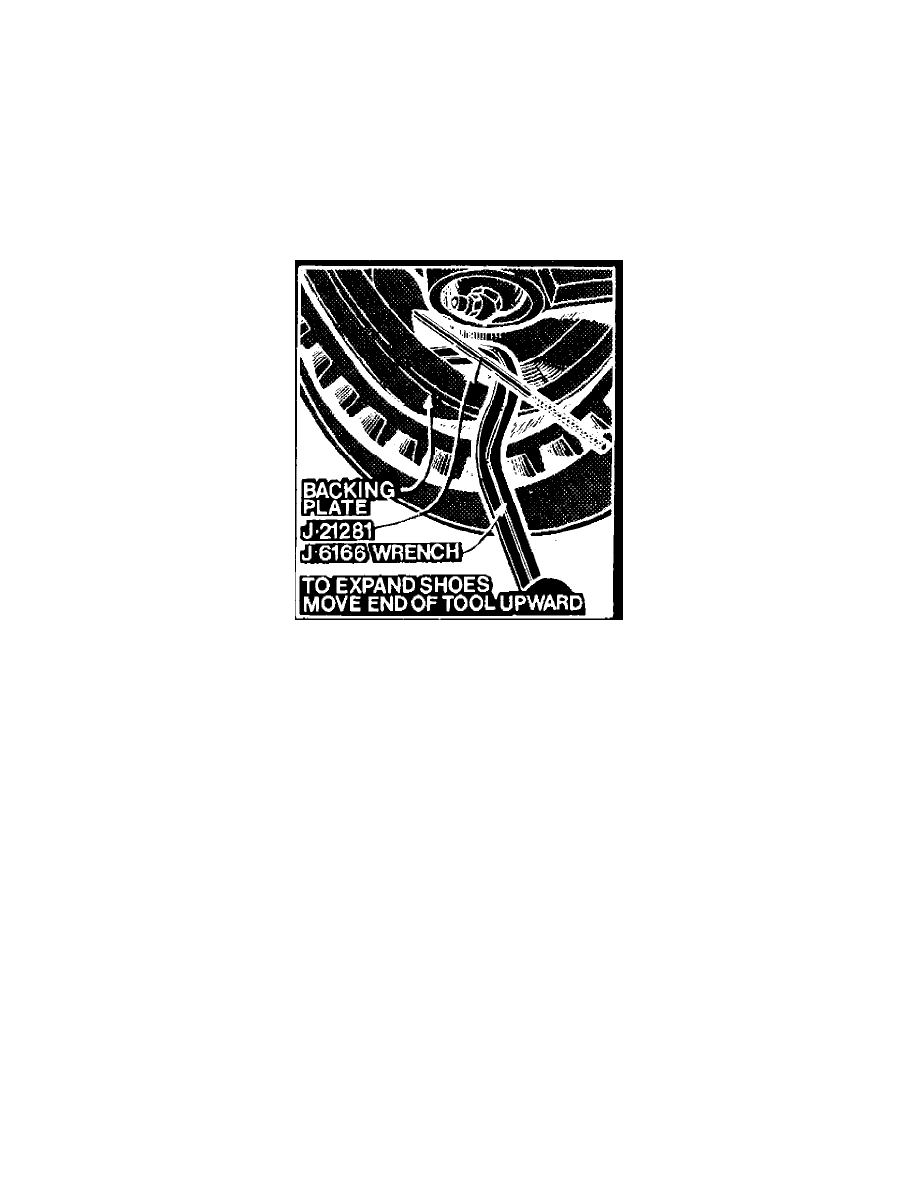Regal Estate Wagon V6-252 4.1L VIN 4 4-BBL (1982)

Brake Shoe: Adjustments
SELF-ADJUSTING DRUM BRAKES
These brakes have self-adjusting shoe mechanisms that assure correct lining-to-drum clearances at all times. The automatic adjusters operate only
when the brakes are applied as the car is moving rearward.
Although the brakes are self-adjusting, an initial adjustment is necessary after the brake shoes have been relined or replaced, or when the length of the
adjusting screw has been changed during some other service operation.
Frequent usage of an automatic transmission forward range to halt reverse vehicle motion may prevent the automatic adjusters from functioning,
thereby inducing low pedal heights. Should low pedal heights be encountered, it is recommended that numerous forward and reverse stops be made until
satisfactory pedal height is obtained. If a low pedal condition cannot be corrected by making numerous reverse stops (provided the hydraulic
system is free of air) it indicates that the self-adjusting mechanism is not functioning. Therefore, it will be necessary to remove the brake drum,
clean, free up and lubricate the adjusting mechanism. Then adjust the brakes as follows, being sure the parking brake is fully released.
Fig. 5 Typical drum brake adjustment
Adjustment
1.
Remove adjusting hole cover from backing plate. Turn brake adjusting screw to expand shoes until wheel can just be turned by hand.
2.
Using suitable tool to hold actuator away from adjuster, Fig. 5, and back off adjuster 30 notches. If shoes still drag, back off one or two additional
notches. Brakes should be free of drag when adjuster has been backed off approximately 12 notches. Heavy drag at this point indicates
tight parking brake cables.
3.
Install adjusting hole cover and check parking adjustment. If finger movement will not turn the screw, free it up. If this is not done, the
actuator will not turn the screw during subsequent vehicle operation. Lubricate the screw with oil and coat with wheel bearing grease.
Any other adjustment procedure may cause damage to the adjusting screw with consequent self-adjuster problems.
4.
Install wheel and drum, and adjusting hole cover. Adjust brakes on remaining wheels in the same manner.
5.
If pedal height is not satisfactory, drive the vehicle and make sufficient reverse stops until proper pedal height is obtained.
